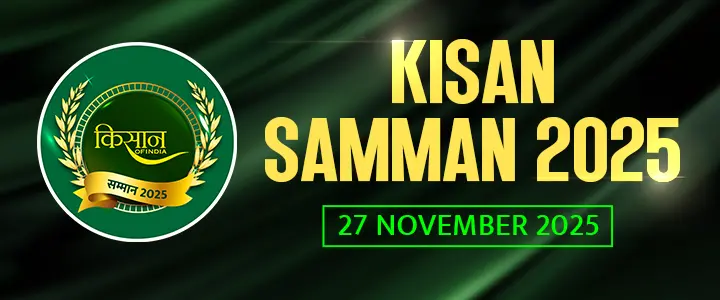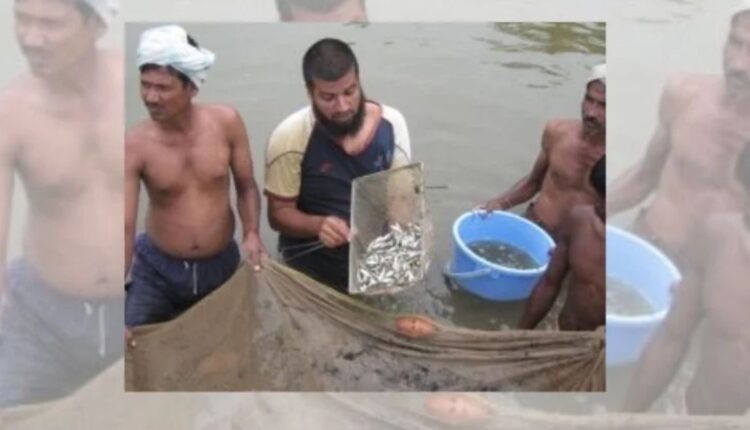Live Fish Packing: Today’s women in India are also participating in agriculture and fish farming. One of them is Vandana Churendra, a resident of Durg, Chhattisgarh, who is associated with the fish farming business. Let us tell you that Vandana has done MTech in Agricultural Engineering. After this, Vandana started trying her luck in fish farming. Vandana has been successfully doing fish farming for the last 5 years. Vandana is also doing live fish packing. This experiment has been done for the first time in India. Currently about a hundred farmers are associated with her. Today we will know about fish farming from Vandana and about her unique live fish packing.
With which technique are you doing fish farming? (Fish Farming Technique)
Vandana told Kisan of India that she uses high density technology and biofloc fish farming technology in fish farming. This technology gives more production as compared to fish farming in ponds.
Which fishes are reared? (Fish Breeds for Biofloc Aquaculture)
Vandana especially rears two breeds of fish. Tilapia and Palacios. These fishes have single thorns. Hence, these fishes can be reared in large quantities in less space.
What is Biofloc Technology?
Vandana tells that in fish farming, Biofloc technology gives more production in less space and less water. This technology requires proper oxygen. In this, the water tank has to be cleaned from time to time. With its help, fish farming is easy. Maintenance of the plant is economical.
We started with a tank of 4 diameter. Now we are doing it in an area of 150 feet. In the initial phase, we had invested 50 thousand rupees. Now the company has a turnover of more than one crore rupees.
Fish Seeds
If farmers are doing fish farming in a pond, then there are fish with many thorns in the pond. They need more space to swim. A fish with a thorn which is reared in a drum needs more food. The more food you feed it, the more it will grow. These people are also supplying outside Chhattisgarh. Vandana says-
I would like to tell you that earlier there was not so much awareness in Chhattisgarh, but now farmers are becoming aware and their growth is also increasing. Now we do not have to order fish seeds from outside. Now we produce fish fry in Chhattisgarh itself. We rear Tilapia and Palacios fish. Farmers can buy seeds of these fish from us. Pay attention to their weight while buying seeds. Fish should not be transported after feeding them grains.
Nutritious Feed To Fish
Vandana further says that fish should not be given less than 28 percent protein. They give only grain-based feed to the fish. 60 to 80 percent of the cost comes only on feed. Vandana further says that for the healthy and rapid growth of fish, they should not be given less than 28 percent protein. High amount of protein in the diet of fish is necessary for the growth and good health of fish.
Vandana says that she gives only grain-based feed to the fish, because it is rich in nutrition and fulfills the nutritional requirements of the fish. Vandana told that 60 to 80 percent of the total expenditure in fish farming is spent only on feed, which is the major cost of this process. For this reason, selection of the right and nutritious feed is very important for the success of fish farming.
Risk of Disease in Fish
When a farmer does fish farming in a pond or a tank, there is a risk of different types of diseases in both the places. When the fish get sick, they start looking lethargic and stop taking feed. If you do fish farming in a tank, then treatment becomes easy. The biggest loss to farmers is due to transport injuries of fish. If you are careful while bringing the fish, then up to 60 percent of the diseases will not occur. If the farmer takes good care of the fish for a month, then the chances of diseases in the fish are reduced considerably.
What is Live Fish Packing Technique?
Vandana has done an experiment which was seen for the first time in India, that is live fish packing technique. Vandana has started this work since last few months.
We are currently supplying to all the big cities of Chhattisgarh. It becomes very difficult to get fresh fish in the market. To overcome this problem, we started live fish packing. We have started India’s first live fish unit. We have included 80 percent women in this unit and We started work under Chhattisgarh’s RIPA project. Currently, an investment of 10 to 15 lakh rupees has been made in it. Now we can supply everywhere in the state. Right now we will supply live fish in Odisha, Kolkata and Bihar. In live fish packing, the fish remains alive for 24 hours.
Vandana says that in fish farming, you can earn a margin of 20 to 40 rupees per kg. If we talk about the cost, then a tank can be installed for 25 thousand rupees. If we talk about a big tank, then it costs about 4.5 lakh rupees. 10 lakh rupees are spent in making a tank. You can produce five to eight tons of fish in it. You can earn a profit of two and a half lakh rupees in this.
Fish Farming Schemes & Subsidy
The central government has the Pradhan Mantri Matsya Palan Sampada Yojana and the same scheme is available for farmers from the state government. Under this scheme, there is a committee in every district which gives information to the farmers about this scheme. Farmers also get subsidy according to the place. You will also get subsidy related to fish nets and fish transport. If you want to set up a processing unit, then you get subsidy on that too. There is a scheme from the government for every area.
Under the Pradhan Mantri Matsya Palan Sampada Yojana, 60 percent subsidy is given to fish farmers belonging to Scheduled Castes and Women category and 40 percent subsidy is given to general category on fish farming. To apply for this scheme and to know more information, you can visit the official website pmmsy.dof.gov.in.
Frequently Asked Questions on Biofloc Fish Farming Technology
Question: What is Biofloc Fish Farming?
Answer: Under Biofloc technology, fish are reared in tanks, in which there is no need to dig ponds. People with less space can also rear fish with this technology. Along with saving water, fish feed is also saved, while 75% of the fish waste is taken out. This waste remains in the water, which is purified using Biofloc technology.
Question: What are the benefits of Biofloc fish farming?
Answer: There are many benefits of Biofloc fish farming:
Water Saving: In this technology, less water is used as compared to traditional ponds.
Higher production: Biofloc technology can increase fish production.
Feed savings: The feed consumed by the fish is reduced, which leads to feed savings.
Environmental-friendly: This technology is less harmful to the environment and encourages water recycling.
Q: What type of tank is required for Biofloc system?
A: There are many types of tanks that can be used for Biofloc system such as plastic tanks, cement tanks, or tanks made of other water-proof materials.
Q: How is water quality maintained in Biofloc system?
A: Oxygen level, pH level, and ammonia level are regularly checked to maintain water quality.
Q: What is live fish packing technology?
A: Live fish packing technology is the process of packing and transporting fish while keeping them alive, so that they can remain fresh for a longer time.
Q: What are the advantages of live fish packing technology?
Answer: Maintaining freshness, improving quality, longevity of fish, and providing better product to customers are the major benefits.
Question: What is the cost of live fish packing technology?
Answer: The cost depends on the equipment, oxygen, transportation, and care. The initial cost may be high, but it improves the quality of the product.
Contact us- If farmers want to share any valuable information or experiences related to farming, they can connect with us via phone or whatsApp at 9599273766 or you can write to us at [email protected]. Through Kisan of India, we will convey your message to the people, because we believe that if the farmers are advanced then the country is happy.
You can connect with Kisan of India on Facebook, Twitter, and WhatsApp and Subscribe to our YouTube channel.



